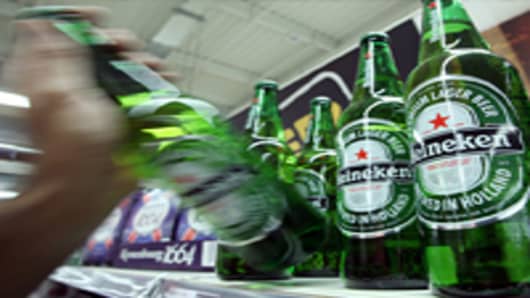“Google is a research tool now for all journalists," Hindy said. "It’s where you start out and it’s helping companies like ours. A simple, honest story is a very, very powerful tool and we could afford to tell our story (to journalists) and have it archived on Google.”
Now, with social media sites like Facebook and Twitter dominating the online landscape, brewers with limited budgets still have a way to actively tell their story. It’s given craft brewers a cost-effective way to engage consumers.
“It’s a great way to build connections and people say it’s something you can do for free, but your time is not free and it takes a lot of time and effort to do it right,” said Kim Jordan, co-founder and CEO of New Belgium. Jordan also spoke at the Craft Brewers Conference. “It’s best not to get started unless you’re going to put a dogged focus on it.”
That dogged focus has paid off for New Belgium with nearly 250,000 “likes” on its main Facebook page and more than 450,000 "likes" across all of its Facebook pages. It recently told Ad Age that its Facebook fans are responsible for $50.7 million in yearly sales — a nice return on the approximately $235,000 the company says it spent on social medialast year.
“It’s good luck the way the media has developed in the last 20 years,” Hindy said. “I think it’s really played into our hands. Craft brewers are really working miracles with the marketing of these brands and social media has come at a perfect time for us.”
Hindy says it’s helped level the playing field.
“The big guys are burdened with all the big-guy kind of attributes that they have to carry around and I think they find it kind of difficult to maneuver these little tributaries of media that you have to work through now.”
Heineken Crafts Winning Social Strategy
While smaller beer brands may be more nimble, one global brewer who has managed to successfully navigate the social media waters is Heineken. With more than 6.8 million "likes" on its main Facebook account, it has the largest worldwide fan base of any beer brand on the platform.
On Twitter, Heineken routinely has the highest share of voice based on average mentions when measured against other major beer brands (Bud Light, Budweiser, Coors Light, Corona, Dos Equis, Stella Artois, Miller Light), including more than 100,000 mentions of Heineken in the month of February alone.
“We are a big brand and the challenge is to make sure we keep our message consistent and clear to consumers,” Olga Osminkina, senior brand director of Heineken Lager told CNBC. “There is so much opportunity to engage and to have a conversation and it’s not a one way street like when you are on TV.”
Heineken sees the space as an opportunity to connect with Millennials, the category of about 80 million consumers born between 1980 and 1995, a group which the company expects will make up 70 percent of the growth in the beer category over the next ten years.
“What we recognize about Millennials is that online is the No. 2 channel of where they spend their time each week, after TV," Osminkina said. "There is more and more screen interaction, so when someone watches TV they are often online at the same time, so we make sure that our campaign reflects their lifestyles.”
It’s a strategy that’s paid off with the brand showing explosive growth on its social media platforms in the last year, growing its Facebook following in the United States tenfold in 2011 alone. Now that they’ve generated significant reach with their fan base, the challenge becomes keeping those fans engaged and making them feel like part of a community.
“We don’t want people to leave us behind by just pressing Like. That’s not the end, that’s the beginning,” Osminkina said. “One of the No. 1 drivers of conversation in the beverage industry is relevancy, and the idea that ‘this brand speaks to me’ and that all starts with a dialogue with the consumer.”
Heineken expects it will spend 15 percent of its marketing budget on social media in order to help keep the conversation and, ultimately, the beer flowing. But while the budget size may be larger than most, the goal is the same: the opportunity to have your story connect with consumers.
“One of the things we learned was that the Heineken consumer forgets what Heineken’s backstory is and the richness of tradition behind Heineken," she said. "We realized that people want to know our story, so we want to give them more information about what is really a global icon.”
Questions? Comments? Email us at consumernation@cnbc.com. Follow Tom Rotunno on Twitter @tomrotunno.



